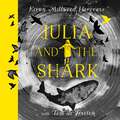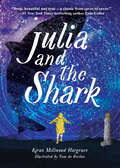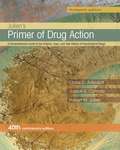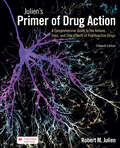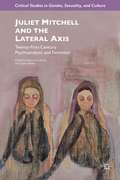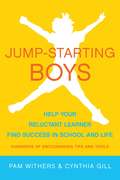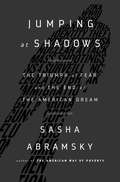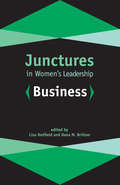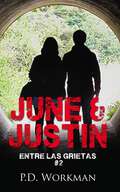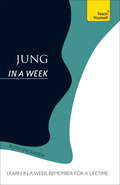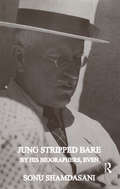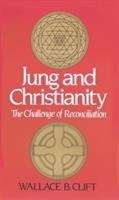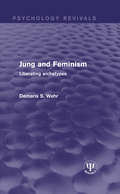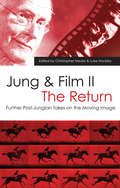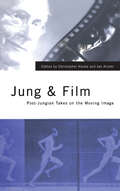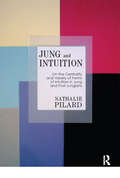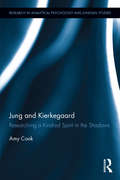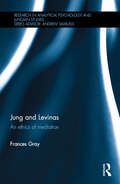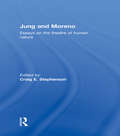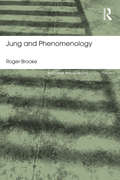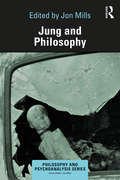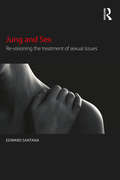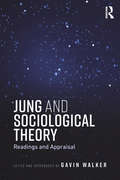- Table View
- List View
Julia and the Shark
by Kiran Millwood HargraveA captivating, powerful and luminous story from a bestselling, award-winning author about a mother, a daughter, and the great Greenland shark. Narrated beautifully with atmospheric sound effects, this is a perfect audiobook for 9+ fans of David Almond and Frances Hardinge.'A truly beautiful book, with text and illustrations in perfect harmony. A book to treasure!' Jacqueline Wilson'Julia and the Shark is deep, beautiful and true. The art shines and the writing soars - a classic from cover to cover' Eoin Colfer'A rich, immersive and wondrous journey, through deep darkness to hope and light' Sophie Anderson, author of The House with Chicken LegsThe shark was beneath my bed, growing large as the room, large as the lighthouse, rising from unfathomable depths until it ripped the whole island from its roots. The bed was a boat, the shark a tide, and it pulled me so far out to sea I was only a speck, a spot, a mote, a dying star in an unending sky...Julia has followed her mum and dad to live on a remote island for the summer - her dad, for work; her mother, on a determined mission to find the elusive Greenland shark. But when her mother's obsession threatens to submerge them all, Julia finds herself on an adventure with dark depths and a lighthouse full of hope...A beautiful, lyrical, uplifting story about a mother, a daughter, and love - with timely themes of the importance of science and the environment.(P) 2021 Hodder & Stoughton Limited
Julia and the Shark
by Kiran Millwood Hargrave"Deep beautiful, and true--a classic from cover to cover." --#1 New York Times bestselling author Eoin ColferThere are more secrets in the ocean than in the sky... Ten-year-old Julia loves the mysteries of the ocean and marine biology, just like her scientist mother. Her family is spending the summer on a remote island where her mom is searching for the elusive Greenland shark, a creature that might be older than the trees, and so rare that it&’s only been seen a few times. But the ocean is reluctant to give up its secrets, and Julia tries not to worry as her mother returns disappointed at the end of each day. Determined to prove that the shark is real, Julia sets off on a quest to find it herself, armed with a set of coordinates, a compass, and her trusty rain jacket. She soon realizes that there are some journeys you shouldn&’t go on alone. As Julia comes face to face with the dark and wondrous truths of the sea, she finds the strength to leave the shark in the depths and kick up towards the light. Through a unique blend of poetic prose and stunning illustrations, Julia and the Shark tells an unforgettable story full of dark depths and starry skies, courage and hope. This lyrical, deeply moving middle grade novel about one family&’s fierce love and resilience is perfect for starting conversations about mental health and how it&’s okay to not be okay.
Julien's Primer of Drug Action
by Robert M. Julien Claire D. Advokat Joseph E. ComatyIn its 40th anniversary edition, A Primer of Drug Action continues to evolve side by side with the field it covers, drawing on the expertise of its authors in medicine, basic science, and clinical science to offer the most current and comprehensive guide to psychopharmacology available.
Julien's Primer of Drug Action
by Claire D. Advokat Robert Julien, Ph.D. Joseph ComatyJulien’s enduring classic returns providing a thorough overview of both therapeutic and recreational drugs, including efficacy, mechanisms, and side effects.
Juliet Mitchell and the Lateral Axis: Twenty-first Century Psychoanalysis And Feminism (Critical Studies In Gender, Sexuality, And Culture Ser.)
by Robbie Duschinsky Susan WalkerThis volume fills the gap in books dedicated to the ideas of ground-breaking theorist Juliet Mitchell. Essays from internationally renowned scholars address themes that cross-cut her oeuvre: equality, violence, collective movements, subjectivity, sexuality and power. Mitchell herself contributes a chapter and an afterward.
Jump-Starting Boys
by Pam Withers Dr John Duffy Cynthia GillEveryone knows that boys are falling behind in education. Largely left out of the discussion are parents of boys, who are most aware that their bright, eager sons hit an invisible wall somewhere near fourth grade, after which they become disengaged, discouraged, and disaffected. There are dozens of books on underachieving boys, but most parents brave enough to lift one off the shelf are instantly intimidated by the footnotes, graphs, case studies, and academic-speak addressed almost entirely to educators. What about the average guilt-ridden, frustrated mother or father of an underachieving boy? Jump-Starting Boys is the first book on the market that empowers parents, helping them reclaim the duties and rewards of raising their children and navigate the influences of school and media. Filled with reassurance and support, the authors turn fear and guilt into can-do confidence. Through easy tips and action list sidebars, this is the most practical, readable book on the topic.
Jump-Starting Boys: Help Your Reluctant Learner Find Success in School and Life
by Pam WithersEveryone knows that boys are falling behind in education. Largely left out of the discussion are parents of boys, who are most aware that their bright, eager sons hit an invisible wall somewhere near fourth grade, after which they become disengaged, discouraged, and disaffected. There are dozens of books on underachieving boys, but most parents brave enough to lift one off the shelf are instantly intimidated by the footnotes, graphs, case studies, and academic-speak addressed almost entirely to educators. What about the average guilt-ridden, frustrated mother or father of an underachieving boy? Jump-Starting Boys is the first book on the market that empowers parents, helping them reclaim the duties and rewards of raising their children and navigate the influences of school and media. Filled with reassurance and support, the authors turn fear and guilt into can-do confidence. Through easy tips and action list sidebars, this is the most practical, readable book on the topic.
Jumping at Shadows: The Triumph of Fear and the End of the American Dream
by Sasha AbramskyWhy is an unarmed young black woman who knocks on a stranger's front door to ask for help after her car breaks down perceived to be so threatening that he shoots her dead? Why do we fear infrequent acts of terrorism more far more common acts of violence? Why does a disease like Ebola, which killed only a handful of Americans, provoke panic, whereas the flu--which kills tens of thousands each year--is dismissed with a yawn?Jumping at Shadows is Sasha Abramsky's searing account of America's most dangerous epidemic: irrational fear. Taking readers on a dramatic journey through a divided nation, where everything from immigration to disease, gun control to health care has become fodder for fearmongers and conspiracists, he delivers an eye-popping analysis of our misconceptions about risk and threats. What emerges is a shocking portrait of a political and cultural landscape that is, increasingly, defined by our worst fears and rampant anxieties.Ultimately, Abramsky shows that how we calculate risk and deal with fear can teach us a great deal about ourselves, exposing deeply ingrained strains of racism, classism, and xenophobia within our culture, as well as our growing susceptibility to the toxic messages of demagogues.
Junctures in Women's Leadership: Business
by Dana M. Britton Laura Lovin Carolina Alonso Bejarano Rosemary Ndubuizu Stina Soderling Amanda Roberti Professor Lisa Hetfield Katie Mccollough Crystal Bedley Grace HowardHow have women managed to break through the glass ceiling of the business world, and what management techniques do they employ once they ascend to the upper echelons of power? What difficult situations have these female business leaders faced, and what strategies have they used to resolve those challenges? Junctures in Women's Leadership: Business answers these questions by highlighting the professional accomplishments of twelve remarkable women and examining how they responded to critical leadership challenges. Some of the figures profiled in the book are household names, including lifestyle maven Martha Stewart, influential chef Alice Waters, and trailblazing African-American entrepreneur Madame C.J. Walker. Others have spent less time in the public eye, such as Johnson & Johnson executive JoAnn Heffernan Heisen, Verizon Senior Vice President Diane McCarthy, Wells Fargo technology leader Avid Modjtabai, Xerox CEO Ursula Burns, Spanx founder Sara Blakely, inventor Jane ni Dhulchaointigh, engineering firm President Roseline Marston, Calvert Investments President and CEO Barbara Krumsiek, and Merrill Lynch executive Subha Barry. These women, from diverse backgrounds, have played important roles in their respective corporations and many have worked to improve the climate for women in male-dominated industries. This is a book about women who are leading change in business. Their stories illuminate the ways women are using their power and positions--whether from the middle ranks or the top, whether from within companies or by creating their own companies. Each case study in Junctures in Women's Leadership: Business includes a compelling and instructive story of how a woman business leader handled a critical juncture or crisis in her career. Not only does the book offer an inspiring composite portrait of women succeeding in the business world, it also provides leadership lessons that will benefit readers regardless of gender.
June & Justin, Entre las Grietas #2
by P. D. WorkmanJustin había cometido un error. Un gran error que cambia la vida. Ya le falló a junio una vez. Él no estuvo allí cuando ella lo necesitó y, gracias a él, sus vidas nunca volverán a ser las mismas. June lo es todo para Justin, y él debe serlo todo para ella. Debe proteger a June a toda costa. Justin está preparado para pasar el resto de su vida evitando que ella vuelva a lastimarse. Pero parece que siempre se están quedando atrás, apenas un paso por delante de las pesadillas. Siempre hay un peligro más, a la vuelta de la esquina.
Jung In A Week: Teach Yourself
by Ruth SnowdenLearn in a week, remember for a lifetime!In just one week, this accessible book will give you knowledge to last forever. End of chapter summaries and multiple choice questions are all designed to help you test your knowledge and gain confidence. So whether you are a student or you simply want to widen your knowledge, you will find this seven-day course a very memorable introduction.Sunday: Learn who Jung was and what he didMonday: Explore Jung's inner world and how this informed his ideasTuesday: Understand Jung's view of the psyche and its journeyWednesday: Consider Jung's views on dreams and symbolsThursday: Engage with Jung's understanding of personality and how we form relationshipsFriday: Find out what Jung thought about esoterica, the paranormal, religion and spirituality.Saturday: Look at how Jung's ideas have been developed over time and how they are relevant today.
Jung In A Week: Teach Yourself
by Ruth SnowdenLearn in a week, remember for a lifetime!In just one week, this accessible book will give you knowledge to last forever. End of chapter summaries and multiple choice questions are all designed to help you test your knowledge and gain confidence. So whether you are a student or you simply want to widen your knowledge, you will find this seven-day course a very memorable introduction.Sunday: Learn who Jung was and what he didMonday: Explore Jung's inner world and how this informed his ideasTuesday: Understand Jung's view of the psyche and its journeyWednesday: Consider Jung's views on dreams and symbolsThursday: Engage with Jung's understanding of personality and how we form relationshipsFriday: Find out what Jung thought about esoterica, the paranormal, religion and spirituality.Saturday: Look at how Jung's ideas have been developed over time and how they are relevant today.
Jung Stripped Bare: By His Biographers, Even
by Sonu ShamdasaniHow many "posthumous" lives does a man have to live? Nearly half a century after his death, C. G. Jung is a subject of continual controversies. Every few years, a new life of Jung appears, each promising to provide the missing master key to the mysteries of his life and work, and to lay bare their secrets. However, with every successive "life", Jung becomes shrouded in an ever-increasing web of rumour, gossip, innuendo and fantasy. We may ask why Jung biographies are so filled with shortcomings? How did Jung become a fiction? This book addresses these issues. It demonstrates the pitfalls and fallacies of such works, and sets out how his life and work should be approached on a historical basis, drawing on decades of archival investigation and new documentation. It surveys attempts to write Jung's biography from during his own lifetime until the present; shows how Memories, Dreams, Reflections came to be falsely perceived as his autobiography; and why his Collected Works was never completed. Thus this work lays out an agenda for future studies and discussions of Jung, the reception of his work and its impact on contemporary culture.
Jung and Christianity: The Challenge of Reconciliation
by Wallace B. CliftA parish minister attempts to answer the challenge presented to Christianity in the last decade of Jung's life--to make the teachings real in this day and age, and offer true enlightenment of the soul.
Jung and Feminism: Liberating Archetypes (Psychology Revivals)
by Demaris S. WehrJung, in contrast to Freud, has typically been considered more sympathetic to women largely because of his emphasis on the feminine as a way of being in the world and on the ‘anima’, the unconscious feminine aspect of male personality. Feminists, however, have viewed Jung’s whole notion of the ‘feminine’ with suspicion, seeing it as a projection of male psyche and not an authentic understanding of female humanity. For Demaris Wehr both feminism and Jungian psychology have been guiding forces, and in this book, originally published in 1988, she mediates between feminists and classical Jungians – two groups historically at odds. She faces squarely the male-centred assumptions of some Jungian concepts and challenges Jung’s claims for the universality and purely empirical basis of his work, but nevertheless maintains an appreciation for the value of Jung’s understanding of human nature and the process of individuation. By bringing the insights of feminist theology to bear on the seemingly unbridgeable gap between analytical psychology and feminism, she succeeds in reclaiming Jungian psychology as a freeing therapy for women and reveals it as the ultimately liberating vision its founder intended it to be.
Jung and Film II: Further Post-Jungian Takes on the Moving Image
by Luke Hockley Christopher HaukeSince Jung and Film was first published in 2001, Jungian writing on the moving image in film and television has accelerated. Jung and Film II: The Return provides new contributions from authors across the globe willing to tackle the broader issues of film production and consumption, the audience and the place of film culture in our lives. As well as chapters dealing with particular film makers such as Maya Derren and films such as Birth, The Piano, The Wrestler and Breaking the Wave, there is also a unique chapter co-written by documentary film-maker Tom Hurvitz and New York Jungian analyst Margaret Klenck. Other areas of discussion include: the way in which psychological issues come under scrutiny in many movies the various themes that concern Jungian writers on film how Jungian ideas on psychological personality types can be applied in fresh ways to analyse a variety of characters. The book also includes a glossary to help readers with Jungian words and concepts. Jung and Film II is not only a welcome companion to the first volume, it is an important stand- alone work essential for all academics and students of analytical psychology as well as film, media and cultural studies.
Jung and Film: Post-Jungian Takes on the Moving Image
by Christopher Hauke; Ian AlisterJung and Film brings together some of the best new writing from both sides of the Atlantic, introducing the use of Jungian ideas in film analyis. Illustrated with examinations of seminal films including Pulp Fiction, Blade Runner, and 2001 - A Space Odyssey, Chris Hauke and Ian Alister, along with an excellent array of contributors, look at how Jungian ideas can help us understand films and the genres to which they belong. The book also includes a glossary to help readers with Jungian terminology. Taking a fresh look at an ever-changing medium, Jung and Film is essential reading for academics and students of analytical psychology, as well as film, media and cultural studies.
Jung and Intuition: On the Centrality and Variety of Forms of Intuition in Jung and Post-Jungians
by Nathalie PilardJung and Intuition examines for the first time the twelve categories of intuition described in both the works of C. G. Jung and the post-Jungians. Nowhere, other than in Jung's own work, has intuition been more fully treated. Each form of intuition is critically explained in the historical context of its appearance and located in one of the four spheres of Jung's psychology: the unconscious, the subconscious (Unterbewusste, consciousness, and Jungian and post-Jungian practice. This work brings Jung's entire psychology in all its depth from 1896 to its contemporary use into greater clarity for both professionals and lay readers. The author persuasively shows that intuition is at the heart of Jung's psychology. It is central to his concept of the archetypes as well as to his understanding of the subconscious and the active imagination. It also involves both clinical and philosophical approaches, as powerfully demonstrated by his pioneering work at the Burgholzli Klinik in Zurich.
Jung and Kierkegaard: Researching a Kindred Spirit in the Shadows (Research in Analytical Psychology and Jungian Studies)
by Amy CookJung and Kierkegaard identifies authenticity, suffering and self-deception as the three key themes that connect the work of Carl Jung and Søren Kierkegaard. There is, in the thinking of these pioneering psychologists of the human condition, a fundamental belief in the healing potential of a religious outlook. This engaging and erudite text explores the significance of the similarities of thinking between Kierkegaard and Jung, bridging the gap between the former’s particular brand of existential Christian psychology and the latter’s own unique philosophy. Given the similarity of their work and experiences that were common to both of their personal biographies, particularly the relationship that each had with his father, one might expect Jung to have found in Kierkegaard a kindred spirit. Yet this was not the case, and Jung viewed Kierkegaard with great scorn. That there exists such a strong comparison and extensive overlap in the life and thought of these towering figures of psychology and philosophy leads us to question why it is that Jung so strongly rejected Kierkegaard. Such hostility is particularly fascinating given the striking similarity that Jung’s own analytical psychology bears to the Christian psychology upheld by Kierkegaard. Cook’s thought-provoking book fills a very real gap in Jungian scholarship and is the first attempt to undertake a direct comparison between Jung and Kierkegaard’s models of development. It is therefore essential reading for academics and postgraduate students with an interest in Jungian and Kierkegaard scholarship, as well as psychology, philosophy and religion more generally.
Jung and Levinas: An ethics of mediation (Research in Analytical Psychology and Jungian Studies)
by Frances GrayThis book brings C.G. Jung into conversation with the French philosopher Emmanuel Levinas, taking a radical view of post-modernist theory which, the author argues, is relentlessly introverted. Frances Gray presents completely new research which extends analytical psychology into the world of dispute resolution in mediation within a deeply philosophical framework. Arguing that mediation is a therapeutics that entails a psycho-social archaeology which, in turn, requires recognition of the foundational roles of sex/gender, time and narrative in inter-subjective relationships, this book develops Jung's approach to projection as an ethical process that assumes the presence of a sex/gendered Other. Chapters explore the possibility of a psycho-social archaeology through development of the argument that a radical turn to the fundamentals of our own consciousnesses can open up a landscape on which we begin to fashion the moral courage necessary for the practice of alternative dispute resolution in mediation. This book highlights Jung's contention that withdrawal of projection is a fundamentally moral endeavour and that although Levinas' face of the Other can be seen as a way of acknowledging the Otherness of the Other, there are limits to its application in Jungian thinking. This book maintains that the face of the Other is critical to any moral encounter and, above all, brings us to the transformational possibilities of the process of dispute resolution in mediation. Jung and Levinas will appeal to researchers, students and practitioners of analytical psychology, dispute resolution, applied ethics, conflict studies and transformation.
Jung and Moreno: Essays on the theatre of human nature
by Craig E. StephensonTo many, Jung and Moreno seem to be on opposite sides in their theories and their practices of psychotherapy. Jung defines self as emerging inwardly in an intrapsychic process of individuation; Moreno defines self as enacted outwardly in psychosocial networks of relationships. Jung and Moreno: Essays on the theatre of human nature shows how Jung and Moreno can be creatively combined to understand better and facilitate therapeutic work. Craig E. Stephenson and contributors write about how and why they put together Jung and Moreno. They describe and discuss psychodrama sessions grounded in the fundamentals of Jung’s analytical psychology, as well as dream and fairy tale enactments and individual psychoanalytical sessions in which they employ psychodramatic techniques. The essays retheorize Jungian concepts of transference and complexes in the light of Moreno’s insights. They reframe and deepen traditional psychodramatic techniques by securing them within Jung’s archetypal context. Jung and Moreno challenges our understanding of healing practices and the integration of spontaneous unconscious processes, bringing these two ground breaking practitioners to meet collaboratively in the theatre of human nature. The contributions are original and insightful arguments by nine important thinkers. This book will be of interest to psychotherapists, analytical psychologists, psychoanalysts, psychodrama practitioners, drama therapists and students.
Jung and Phenomenology (Routledge Mental Health Classic Editions)
by Roger BrookeJung and Phenomenology is a classic text in the field of Jungian scholarship. Originally published in 1991, it continues to be essential to conversations regarding the foundations of Jungian thought. This Classic Edition of the book includes a brand new introduction by the author. Jung described his own approach as phenomenological, particularly as it contrasted with Freud’s psychoanalysis and with medical psychiatry. However, Jung’s understanding of phenomenology was inconsistent, and he writes with an epistemological eclecticism which leaves him often at cross purposes with himself. In Jung and Phenomenology, Brooke systematically addresses the central ideas of Jung’s thought. The major developments in the post-Jungian tradition are extensively integrated into the conversation, as are clinical issues, meaning that the book marks a synthesis of insights in the contemporary Jungian field. His reading and interpretation of Jung are guided by the question of what it is that Jung is trying to show but which tends to be obscured by his formulations. Examining the meaning of Jung’s theoretical ideas in concrete existential terms, Jung and Phenomenology is essential reading for psychoanalysts, psychologists and students interested in the Jungian tradition and existential phenomenology.
Jung and Philosophy (Philosophy and Psychoanalysis)
by Jon MillsAlthough the works of C.G. Jung have received worldwide attention, there has been surprisingly little engagement by philosophers. In this volume, internationally recognized philosophers, Jungian analysts, and scholars attempt to fill this void in the literature. Although Jung did not have a formalized, systematic philosophy, the philosophical implications of his thought are explored in relation to his key theoretical postulates on archetypes, the collective unconscious, the mind-body problem, phenomenology, epistemology, psychology of religion, alchemy, myth, ethics, aesthetics, and the question of transcendence. Through analyzing Jung philosophically, new vistas emerge for enhanced explication, theoretical refinement, revision, and redirecting shifts in emphasis that lend more proper cohesion to Jung’s philosophy. For the first time we may observe philosophers attempting to unpack the philosophical consequences of Jung’s thought applied to many traditional topics covered in the humanities and the social sciences. Given that Jung has not been historically taken up by philosophers, critiqued, nor applied to contemporary theories of mind, culture, and human nature, this is the first book of its kind. It is argued that a new generation of research in analytical psychology can benefit from philosophical scrutiny and theoretical fortification. Jung and Philosophy will be of interest to psychoanalysts, philosophers, cultural theorists, religious scholars, and the disciplines of depth psychology and post-Jungian studies.
Jung and Sex: Re-visioning the treatment of sexual issues
by Edward SantanaC. G. Jung, despite not being widely known for his views on sexuality or the treatment of sexual issues, made extensive contributions to understanding the complexities of this field throughout his life. In Jung and Sex, Edward Santana makes the case that reclaiming this knowledge can address substantial problems with current treatments and support many who struggle with sexual issues. This thorough exploration of Jung’s approach to sexual issues presents a wide-ranging new look at his work and adds contemporary perspectives for helping those suffering with sexual difficulties. The book calls for an important bridging of clinical perspectives to address the contemporary challenges of complex sexual issues and brings attention to a large body of Jung’s work on human sexuality, ranging from pioneering thoughts on sexual expressions of the soul to understanding ways to treat sexual symptoms. Jung and Sex provides a comprehensive analysis of Jung’s views on, and clinical approaches to, sexual issues and treatments, using this knowledge in order to help those with sexual problems and the professionals who support them. It is an essential text for understanding critical dimensions of human sexuality. Jung and Sex is an important contribution that closes a gap in the literature of Jungian psychology. It offers unique insights into the subject for Jungian psychotherapists, analytical psychologists, sex therapists, and relationship counselors. The book also supports the work of academics and those interested in contemporary applications of Jungian and post-Jungian studies.
Jung and Sociological Theory: Readings and Appraisal
by Gavin WalkerCarl Jung has always lain at the edge of sociology's consciousness, despite the existence of a long-established Freudian tradition. Yet, over the years, a small number of sociological writers have considered Jung; one or two Jungian writers have considered sociology. The range of perspectives is quite wide: Durkheim, Weber, Marx, Levi-Strauss, feminism, mass society, postmodernism. These scattered writings, however, have had little cumulative impact and inspired little debate. The authors seem often not to have known of each other, while the sociological mainstream has remained unmoved or unaware. This is the situation that this book seeks to change. Jung and Sociological Theory brings together a selection of articles and excerpts in a single volume, together with some writings from anthropology, and seeks to begin the task of critical evaluation. Presented in three parts, the book covers anthropology, sociology and an appraisal of Jung and sociological theory. Gavin Walker explores the relationship between Jung and sociology, asking what the writers included here wanted from Jung, how we should locate Jung on the sociological landscape, and how this might link to anthropology. In conclusion he suggests that sociology’s problem with Jung is less that he is difficult to place, than that he compels sociology to face some of its own inconsistencies and evasions. Jung and Sociological Theory will be of interest to all academics and students working in the fields of Jungian studies, analytical psychology and psychoanalysis, sociology, anthropology, feminism, comparative religion and the history of ideas.
